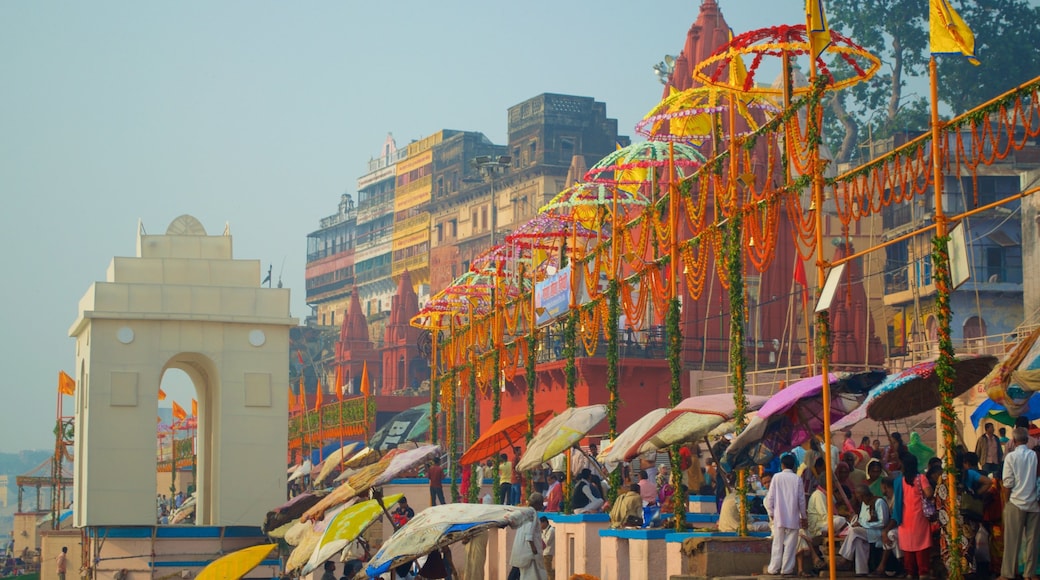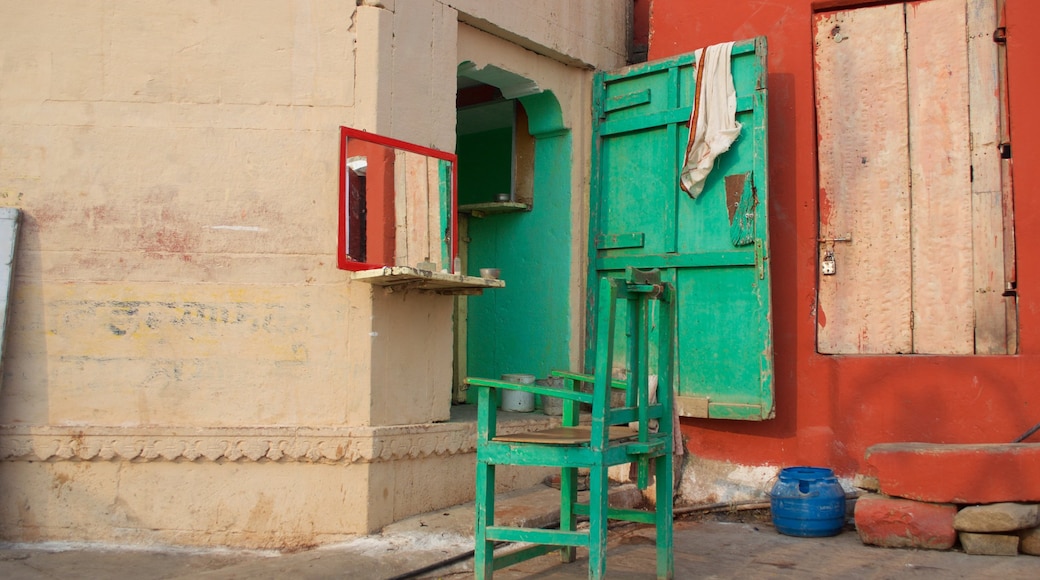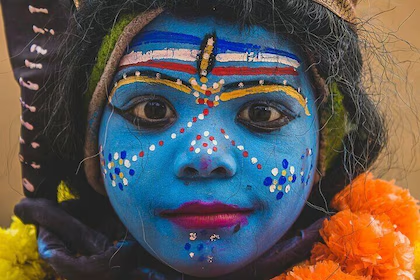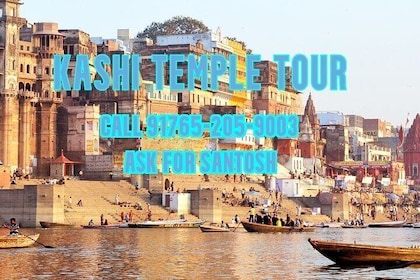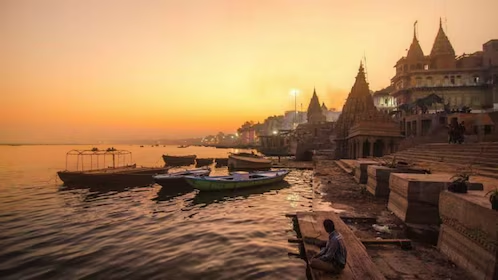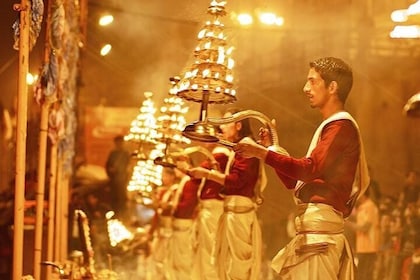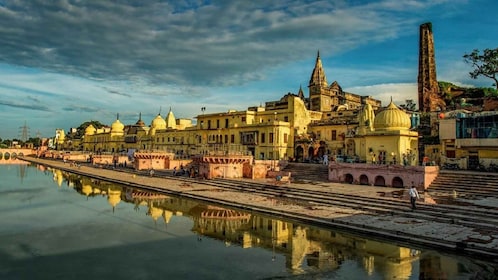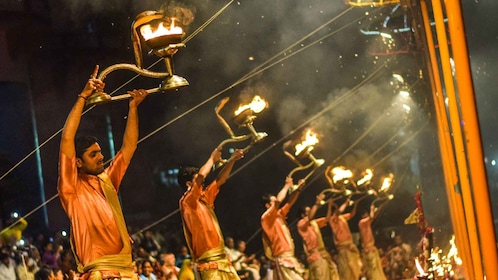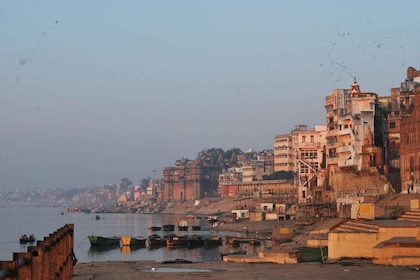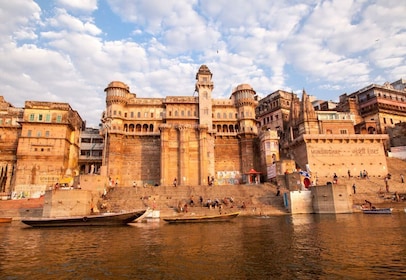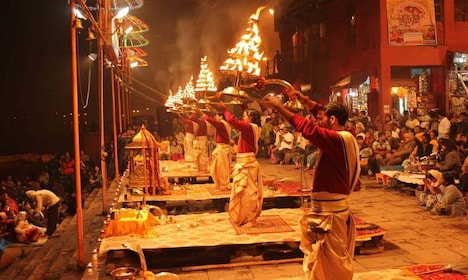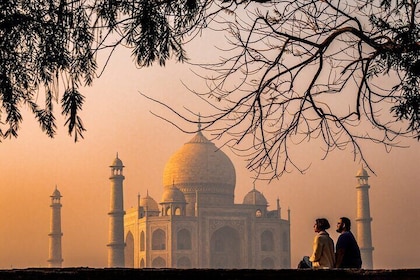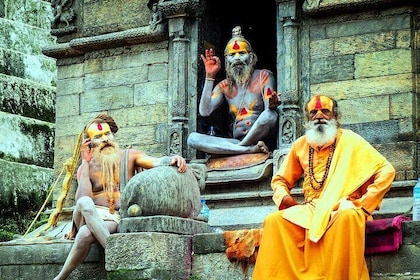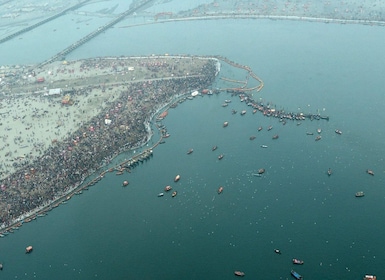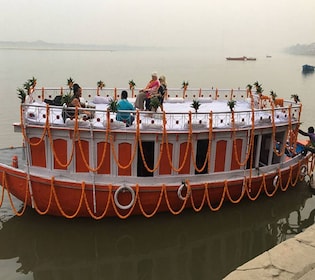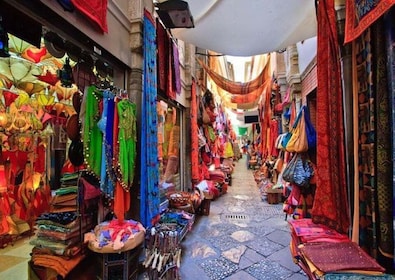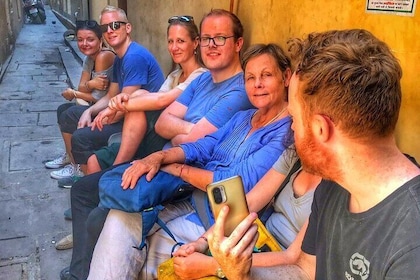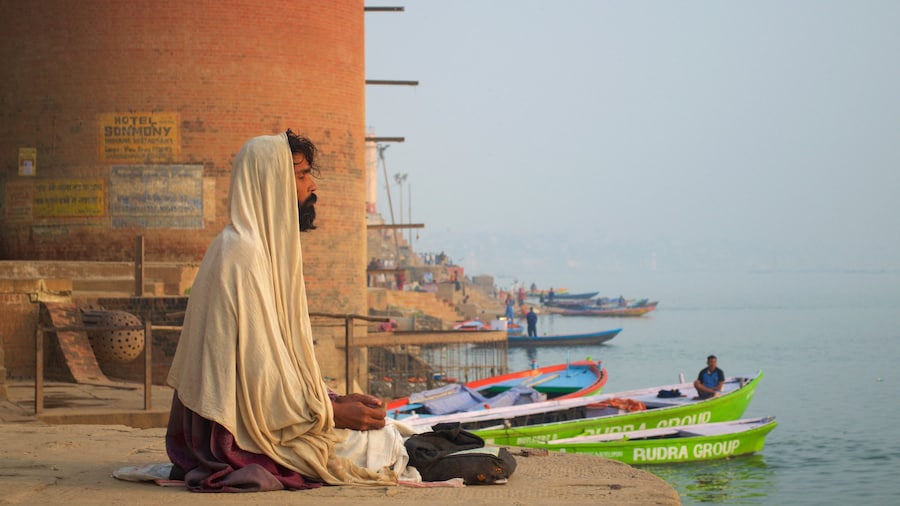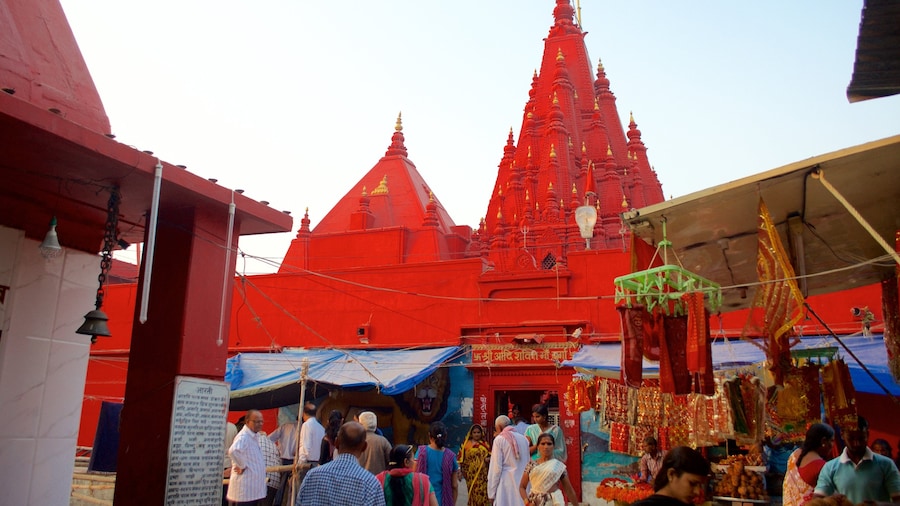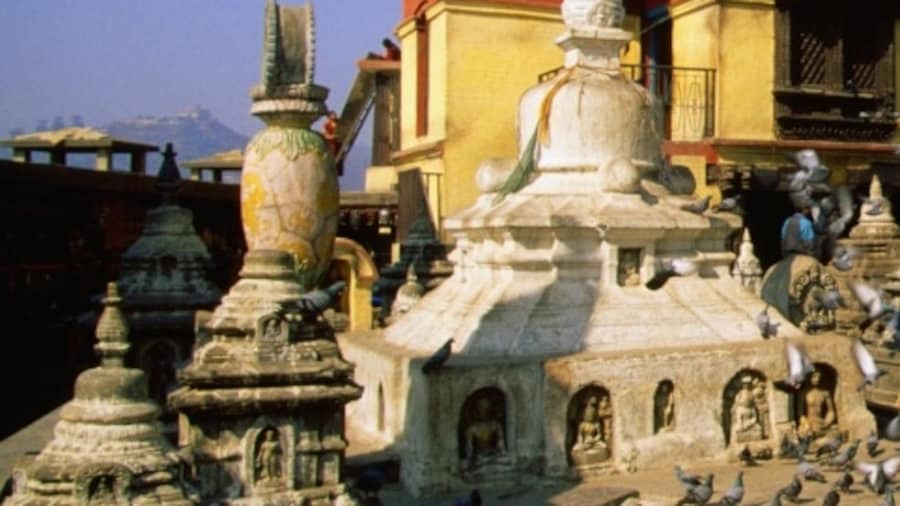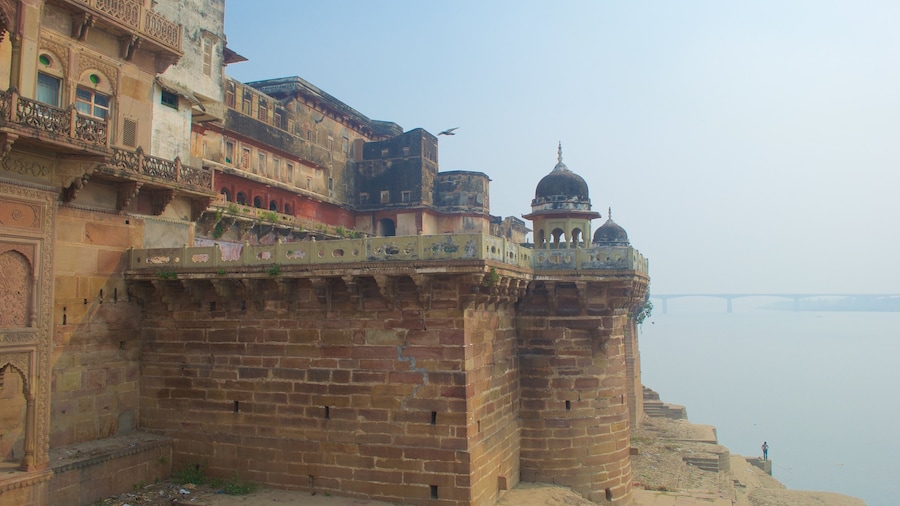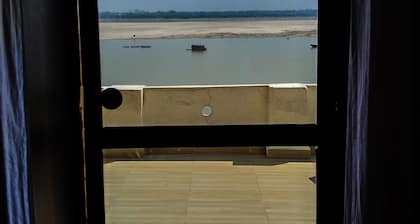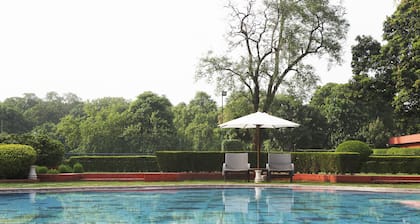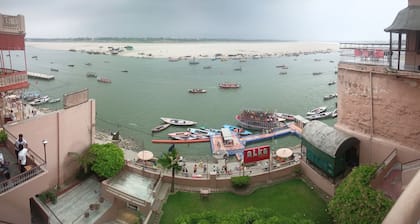Dasaswamedh Ghat is one of Varanasi’s most revered religious sites, a set of terraced steps facing the Ganges River. With bathing pilgrims, flower sellers and religious ceremonies, it’s a place to experience the true essence of Varanasi’s sacred traditions. Present-day Dasaswamedh Ghat dates back to 1748. According to an ancient legend, Lord Brahma sacrificed 10 horses here during a Dasa (ten) Ashwamedha (horse sacrifice) ceremony.
Sit on the steps and relax for a moment to absorb the ghat’s mystical atmosphere. See pilgrims cleansing themselves in the Ganges River’s holy water and families releasing the ashes of loved ones. Watch hawkers peddling flowers and sadhus (holy men) with brightly painted faces executing religious rituals. Come at sunrise to marvel as the sun casts a magical light over the river and devotees arrive for morning puja (prayer).
A highlight of Dasaswamedh Ghat is the chance to attend the Ganga aarti, an extravagant river worship ceremony held after sunset. Young pandits (scholars) dressed in saffron-color robes gracefully wave incense and candlelit brass lamps in unison while chanting hymns. Afterward, devotees send thousands of flickering lamps floating into the river, illuminating the night sky. Appreciate the event from a boat, providing panoramic views of the riverfront and hordes of pilgrims.
While here, take a boat tour along the river. Spot people washing clothes, practicing yoga, playing cricket and laying offerings as you glide past Varanasi’s multitude of ghats. Watch for grand temples and havelis, herders washing buffalo and kids diving off the boardwalks. During periods of low water levels it’s possible to walk between many of the ghats.
Dasaswamedh Ghat sits on the waterfront of Varanasi’s Old City, just a 10-minute walk from the bustling shopping district of Godowlia Chowk. Nearby attractions include the Shri Kashi Vishwanth Temple and Man Mahal and Observatory.
The ghat is a constant hive of activity which presents excellent people-watching and photography opportunities throughout the day. The busiest times are during the morning and evening prayer ceremonies. Remember to be respectful of worshippers when taking photographs.
